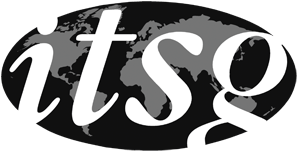Corporate Tax Guide: Denmark

Members:
- Nikolaj Bjørnholm (Bjørnholm Law)
|
1. Country
The information is valid for the entire country except where indicated. For example, in the case of Malaysia, Labuan is part of Malaysia but has a special tax regime, so this is noted. |
Denmark | ||||||||||||||||||||
|
The corporate tax rate shown is the typical corporate tax rate that a domestic corporation owned by non-resident persons would pay. The tax rate does not include withholding tax on dividends, but does include a distribution tax shown separately if applicable. Certain countries have a low corporate tax rate, but charge an additional tax when a dividend is distributed. Because this tax is paid by the corporation, and not deducted from the amount of the dividend itself, it is not a dividend withholding tax. As a result, it typically cannot be reduced by an international tax treaty. |
22% for income year 2017. | ||||||||||||||||||||
|
The basis of taxation for a corporation will typically be one of:
|
Residents are taxed on a worldwide basis, although profits and losses from foreign permanent establishment and real estate are exempt. Non-residents are taxed on Danish-source income. Branches are taxed the same as subsidiaries. Corporation tax is imposed on a company’s profits, which consist of business/trading income, passive income and capital gains. Normal business expenses may be deducted in computing taxable income. | ||||||||||||||||||||
|
Where non-resident corporation carries on business in a country, business profits may be subject to corporate tax. In addition, a branch profits tax may apply in lieu of dividend withholding tax. This branch profits tax applies to the after tax profits, typically at a fixed percentage. An international tax treaty may reduce the rate of branch profits tax, typically to the rate provided for dividend withholding. |
22% for income year 2017. | ||||||||||||||||||||
|
The common forms of business entity are noted. In addition, the entities which are flow through entities for U.S. tax purposes are indicated. |
Public limited company (A/S), private limited company (ApS), entrepreneurial (IvS), general partnership, limited partnership and branch of a foreign company. | ||||||||||||||||||||
|
Capital gains may be fully taxed, partially taxed or not at all. In certain countries, an exemption, called the participation exemption, will apply to exempt from tax a capital gain from disposition of a substantial holding of shares of a subsidiary. Where a participation exemption is applicable, it is noted together with a summary of the main conditions. |
Capital gains are included in taxable income and subject to the corporate tax rate of 22%. However, gains derived from subsidiary shares, group shares or unlisted portfolio shares are exempt (and losses are non-deductible). | ||||||||||||||||||||
|
Certain countries allow group taxation, otherwise known as consolidated tax filing. Here the tax returns of a group of corporations in the country may be combined together, which can be useful. If group taxation is permitted, it is noted along with the main conditions. |
Mandatory national group taxation / group taxation for consolidated companies or an optional international group taxation. | ||||||||||||||||||||
|
Countries offer various kinds of special exemptions and incentives. Examples are a reduced tax rate, a tax holiday, a tax credit on the purchase of equipment, special accelerated deductions for deprecation, incentives for R&D, and various others. Here the major items are noted. |
Special exemptions: Researchers and highly-paid employees from abroad may, under certain conditions, choose to pay tax at a rate of 26% plus labour market contributions, totalling 31.92% for a period of 60 months. The researchers and the highly-paid employees are not entitled to tax deductions. Incentives:
| ||||||||||||||||||||
|
Many countries have thin capitalization rules which limit or deny the deduction of interest expense in certain circumstances. For example, if debt exceeds three times equity, a proportionate amount of interest expense may not be deductible. Limitations take various forms, restricting the interest expense deduction to a percentage of profit, deeming the debt to be equity and the interest to be a payment of dividends, and various other rules which may blend of these principles. Where a country has thin capitalization rules, they are briefly described. |
The deductibility of interest expense in Denmark may be restricted under the thin capitalization test. The thin capitalization test limits the deductibility of interest expense on debt owed to group companies and on debt guaranteed by group companies – it imposes a debt-to equity ratio of 4:1. Companies are deemed to be under common control if a shareholder controls more than 50% of the share capital or more than 50% of the voting power in both companies. It applies to any borrowing from a legal company if the debt exceeds DKK 10 M. | ||||||||||||||||||||
|
Many countries have transfer pricing rules. They very often follow the OECD guidelines and the arms length principle. Some countries have specific rules which apply in certain cases. In addition, some countries allow for a selection of the most appropriate transfer pricing methodology in the circumstances, while other countries follow a hierarchy of methods, with the CUP method (comparable uncontrolled price) often ranking first. The transfer pricing rules are briefly explained. |
The Transfer Pricing Rules apply to transactions with affiliated companies, whether resident or non-resident. The main test of control is direct or indirect ownership of more than 50% of the share capital; or direct control of more than 50% of the voting power. Controlled transactions are subject to the arm’s length principle. Denmark follows the OECD Transfer Pricing Guidelines and Transfer Pricing documents must be prepared. The Danish tax authorities can require certain businesses to prepare Transfer Pricing documents to obtain an assurance report from an independent auditor. | ||||||||||||||||||||
|
11. CFC Rules
Many countries tax passive income earned in controlled foreign corporations (CFC’s) on an imputation basis while active income is not taxed. Such CFC rules are usually complex and vary significantly in what is considered passive income, and how foreign tax paid is taken into account. Some countries approach CFC rules on the basis of whether or not the foreign corporation is resident in a low tax jurisdiction or a tax haven. This may be done through a black list of countries. The general overview of CFC rules is described in simple terms. |
The CFC Rules apply in Denmark if:
| ||||||||||||||||||||
|
Profits repatriated by way of dividends from a subsidiary to a parent company are typically taxed in one of three ways:
|
As a main rule, dividends are included in the taxable income. Dividends on subsidiary and group shares are generally tax-exempt, whereas dividends on portfolio shares are subject to taxation. | ||||||||||||||||||||
|
Most countries allow a foreign tax credit based on a formula, typically net foreign income over the net income times taxes payable. This limits the foreign tax credit to roughly the domestic tax otherwise applicable to the foreign income. There are numerous variations and technical rules in the details of foreign tax credit calculations. Where a foreign tax credit is allowed, the general principles are described. |
Foreign tax paid may be credited against Danish tax on the same profits. However, the credit is limited to the amount of Danish tax payable on the foreign net income. | ||||||||||||||||||||
|
14. Losses
Losses typically can be carried forwards for a period of years, and sometimes can be carried back. Losses may be segregated into capital losses and non capital losses. |
Losses from previous years are fully deductible up to a taxable income that does not exceed a base amount of DKK 7.852 M (2016 – to be adjusted annually), with any remaining losses available to reduce remaining income by only 60%. For jointly taxed companies, the restriction on the use of losses takes place at the level of joint taxation. Carryback is not permitted. | ||||||||||||||||||||
|
It is not practical to list all of the tax treaties which a country has in a simple guide like this. Accordingly, a link is provided in each case to the tax treaties. Some countries have entered into Tax Information Exchange Agreements (TIEA). Treaties are more and more containing provisions that limit benefits (LOB provisions). |
Denmark has a broad tax treaty network, the aim of which is to eliminate double taxation and provide for reduced rates of withholding tax on dividends, interest and royalties. Most of Denmark’s treaties are based on the OECD model treaty, which provides relief from double taxation on all types of income, limits the taxation by one country of companies’ resident in the other, and protects companies resident in one country from discriminatory taxation in the other country. Furthermore, Denmark is a member of the Global Forum on Transparency and Exchange of Information for Tax Purposes. Denmark is a party to the multilateral Nordic Tax Treaty along with Finland, Iceland, Norway, Sweden and the Faroe Islands. | ||||||||||||||||||||
|
Withholding tax rates vary considerably from treaty to treaty, and countries may have domestic exemptions applicable in certain circumstances (for example copyright royalties, interest paid to arm’s length persons, etc.). A table shows the typical rates but cannot adequately summarize all of the details. The applicable treaty should be consulted. |
1 Interest paid to a non-resident is generally exempt from withholding tax, although a 22% withholding tax applies to interest paid to foreign related entities in certain situations (e.g., if the lending company is not covered by the EU Interest and Royalties Directive or protected by a Double Tax Treaty). 2 Dividends paid to a non-resident company are exempt from withholding tax if either of the following requirements are met:
| ||||||||||||||||||||
|
17. Taxation Year
Some countries allow for the selection of year-end while other countries specify a particular year-end which all business entities must have. Normally the taxation year cannot exceed 12 months. Where it can exceed 12 months, this is noted. |
The tax year is generally the calendar year. | ||||||||||||||||||||
|
This is the due date for filing a tax return. Where extensions are available, this is noted. |
The tax return must be filed by 1 May or 1 July of the year after the tax year. Additional reporting requirements could apply for shares and foreign bank accounts. | ||||||||||||||||||||
|
19. Tax Instalments
The typical tax instalment requirements are noted. |
The ordinary prepayment of tax is paid in two equal instalments at 20 March and 20 November. | ||||||||||||||||||||
|
20. Payment of Tax
This is the date when the corporate tax owing for the year must be paid. It may be different from the tax return filing due date. |
Due two months after year-end (normally an estimate is paid and adjusted when tax return is filed). | ||||||||||||||||||||
|
This is the period after which the tax department cannot in normal circumstances reassess a taxation year. It is sometimes referenced to the end of the taxation year and sometimes to the date of the first assessment of that taxation year. |
The statute of limitations is generally three years from the maturity date for the payment of tax. As for Transfer Pricing adjustments, the statute of limitations is five years. An extraordinary statute of limitations is 10 years and only if a specific legal basis applies. | ||||||||||||||||||||
|
If a country has exchange controls, this is noted, together with the main requirements. |
No restrictions are imposed on payments to and from Denmark, although the Danish tax authorities must be informed of certain transactions. Under an anti-money laundering measure, an individual leaving or entering Denmark with more than EUR 10,000 in cash or bearer instruments must report these to Customs. | ||||||||||||||||||||
|
23. VAT
A VAT tax system typically provides that the supply of goods and services is classified as taxable, tax exempt, or zero rated. Where a business is engaged in an activity which is taxable, it must charge VAT on its revenue, and can claim a refund of VAT on its expenditures. Where the activity is exempt, it does not charge VAT on its revenue, and cannot claim back VAT paid. Where the entity is engaged in activities which are zero rated (typically agriculture, food services and exports), then it can claim back VAT which it has paid on its expenditures, and does not charge VAT on its revenue. If a country has a typical VAT system, this is noted. If a country has no VAT system but a sales tax system, this is indicated. Some countries may have a mixture, and taxes may apply at different levels (federal and state for example). |
VAT is imposed on the sale of most goods and the provision of most services. The standard VAT rate is 25%. Businesses registered for VAT can deduct the VAT on most purchases. Certain services are exempted from VAT (e.g., the transports of persons, education, insurance business, financial activities, etc.). VAT-exempted service cannot be deducted on purchases related to such sales, and the business may be liable to pay labour costs instead. The registration threshold for VAT purposes is DKK 50.000. Businesses are obliged to file VAT returns – and pay the VAT on a monthly basis if the annual turnover exceeds DKK 50 M; on a quarterly basis if the annual turnover is between DKK 5 M and DKK 50 M; or on a biannual basis if the turnover does not exceed DKK 5 M. | ||||||||||||||||||||
|
Stamp duty, or land transfer tax, can apply on such things as the transfer of shares, land, or the issuance of bonds or debentures. This is described together with the applicable rates. |
Stamp duty is levied at rates of 0.6%-1.5%, plus a fee of DKK 1.660. | ||||||||||||||||||||
|
25. Capital Tax
If capital tax is payable, this is described. Capital tax may apply in specialized industries, such as banking and insurance, even if a country does not generally apply a capital tax to corporations. |
Denmark does not levy tax on the issue of shares, the increase of share capital or the transfer of shares. | ||||||||||||||||||||
|
26. Other Taxes
Where significant, other taxes are noted. |
Businesses (taxable persons) carrying out certain VAT-exempt activities are liable to payroll tax. | ||||||||||||||||||||
|
Anti-Avoidance Rules take many forms, the most common ones are a general anti-avoidance rule, treaty shopping limitations, the requirement for economic substance (or a business purpose in carrying out transaction) and specific anti-avoidance rules for particular purposes. A very brief overview of the anti-avoidance rules is described. |
Denmark has the following anti-avoidance rules:
Denmark has implemented general anti-avoidance rules (GAAR). The aim of GAAR is preventing abuse of tax treaties and EU direct tax directives. | ||||||||||||||||||||
|
Where a non-resident person holds shares of a corporation established in the country listed, the capital gain which results may be taxable or not taxable depending on the circumstances and, possibly, the existences of an international tax treaty. The general rules are noted. |
Gain on the sale of group shares, subsidiary shares and unlisted portfolio shares is tax-exempt, whereas dividends on portfolio shares are subject to taxation. | ||||||||||||||||||||
|
Where a corporation is acquired through the purchase of shares, sometimes a step up is allowed so that the cost of its assets can be revalued. The main rules are briefly summarized. |
It is not possible to create a tax-free step-up in the tax basis of the assets of the acquired company. | ||||||||||||||||||||
|
30. Use of Rulings
In some countries, rulings are commonly used (and sometimes even required). In other countries the system is either unavailable or not commonly used except in special circumstances. |
A binding ruling can be obtained from the Danish tax authorities. A binding ruling will normally be obtained within six months after filing an application. The binding ruling will be binding for the Danish tax authorities for a maximum period of five years. | ||||||||||||||||||||
|
31. Other
Other important aspects of the tax system are noted. |
Tonnage tax Shipping companies may opt to pay tonnage tax in lieu of the normal corporate income tax. Hydrocarbon taxation Activities carried out in connection with the extraction of hydrocarbons are subject to hydrocarbon taxation. | ||||||||||||||||||||

 Login
Login
















































